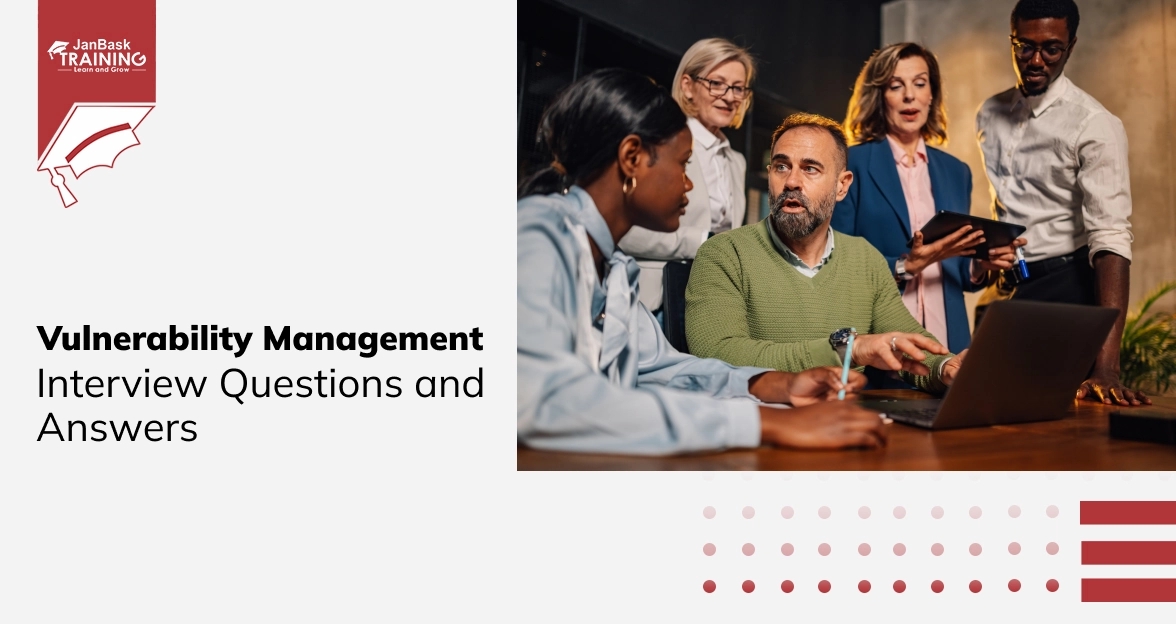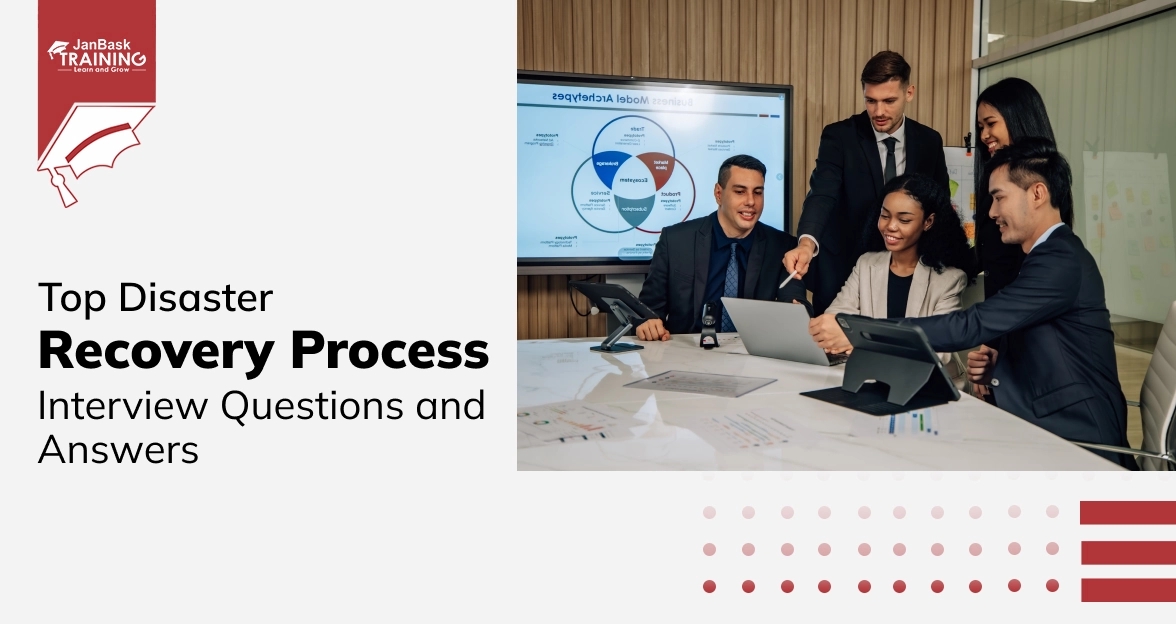 Grab Deal : Upto 30% off on live classes + 2 free self-paced courses - SCHEDULE CALL
Grab Deal : Upto 30% off on live classes + 2 free self-paced courses - SCHEDULE CALL

 Grab Deal : Upto 30% off on live classes + 2 free self-paced courses - SCHEDULE CALL
Grab Deal : Upto 30% off on live classes + 2 free self-paced courses - SCHEDULE CALL

Security and Risk Management is an essential part of CISSP that we can’t ignore! Whenever you have the interview for CISSP, you should be prepared beforehand with the following security and risk management interview questions that we have discussed below:
Ans: The three core security management principles are confidentiality, integrity, and availability, commonly called the CIA triad.
Thеѕе thrеe is thе essential еlемéntѕ for thе comprεhensive security strategy that must be balancéd. As an example, excessive secrecy may also affect availability, which will, in turn, affect the smooth running of the business. Therefore, security professionals must evaluate their organization's requirements and threats to determine the most appropriate equilibrium between the CIA Triad.
Ans: Information security includes various aspects, and risk management is one of the most important. This process entails appraising and ranking risks that target an enterprise’s vulnerable information assets and measures to neutralize these dangers.
Sound risk management enables the organization to make optimal use of its resources and assists in adhering to legal and regulatory requirements. Therefore, organizations should continuously monitor and review the risk environment and revise their safeguards to protect critical assets.
Ans: The information security governance framework aims to integrate IT security and business objectives. It creates the path forward, implements a mitigating strategy, and ascertains sufficient funds for safety actions.
The governance framework promotes cultivating a security culture in the organization, where security considerations are integrated into every business process and decision. This holistic approach is crucial in ensuring the organization’s information assets are safe during the changing threat space.
Ans: Information security depends on ethical bеhavior because it constitutes the basis for stakeholders' trust in an organization. Ethical conduct involves responsibly using sensitive information and powerful tools vital to security professionalism. Ethical principles assist in avoiding conflicts of interest and maintaining confidentiality and integrity of information.
Ethical behavior also encompasses respecting individuals' privacy rights and following the law and regulations. It entails truthful and transparent reporting on security incidents without falsifying facts. Many organizations develop codes of ethics to guide employees’ conduct in different situations.
These codes serve as a guide towards ethical decision-making and help in creating a culture of integrity and reliability. In the field of information sеcurity, whеrе thе consеquеncеs of unеthical bеhavior can be significant, maintaining high еthical standards is not just a moral obligation but also a businеss impеrativе.
Ans: Asset classification is crucial in information security since it enables the organization to determine and establish priorities for protecting its assets. Security measures can be applied by classifying assеts based on their value, sеnsitivity, and importance to the organization.
There is a procedure that includes categorizing assеts under groups like public, intеrnal-only, confidеntial, and highly confidеntial. There are different security controls and handling procedures included in each category. For instance, encryptions, strict access controls, and regular audits might be required for confidential assets, while minimal protection will be necessary for public information.
Assent classification helps to comply with legal and regulatory requirements because certain types of data, like personal information, are often protected by mandatory requirements. Besides, it enables a manager to distribute resources effectively by concentrating security on vital assets.
Ans: Business continuity planning must involve a critical element known as a BIA. It enables enterprises to appreciate the consequences that arise from operational disturbances.
Ans: Essential elements of the organizational security stance include security policies and procedures. Thus, this sets up a formal framework for handling and securing information assets. Let's see in a little more detail:
Ans: The ‘Defense in Depth’ concept involves several independent security controls across every network or IT system section. It is meant for redundancy, whereby one layer can fail or be bypassed. This approach combines various preventive, detective, and responsive controls. Examples of preventive controls include firewalls and antivirus software to prevent attacks before they happen.
Intrusion detection systems can detect detective controls, such as intrusion detection systems that alert to possible security breaches. Incident response teams, also known as responsive controls, help reduce an attack's impact.
Organizations can safeguard their assets even when one of these layers is compromised. This is also a way of handling various security issues, including external attacks, internal threats, and technical failures.
Ans: One of the essential aspects of information security is encryption, which scrambles data into an illegible form to make it unusable for unauthorized users. It is a vital mechanism for safeguarding data’s confidentiality and integrity (both in transit and at rest). Encryption algorithms use keys to encrypt, and decrypt data, and data security largely depends on the strength of these keys and the encryption method used.
Encryption protects data in transit by keeping information safe and away from prying eyes on networks. Encryption protects data that has been kept for storage in a device or the cloud.
Encryption achieves secure communication, digital signature, and assured information authenticity. Even as cyber threats advance, strong encryption is still among the best measures against data access breaches.
Ans: An organization's security can be improved by providing access to information and other vital resources to only approved personnel through access control systems.
Ans: Security incident response is an essential part of organizational security. It encompasses a collection of processes and equipment to identify, remediate, and restore normal functioning after a security breach. Let's check in detail what it mainly emphasizes:
Ans: Information security involves adhering to laws and regulations. Data protection is a set of rules that must be followed to fulfill legal obligations and industry guidelines.
Compliance is one way an organization ensures it adopts adequate security mechanisms for data protection and against data breaches. Compliance also helps avoid legal penalties, losses, and reputation damages associated with non-compliance.
GDPR, HIPAA, and SOX provide specific guidelines for handling data, security of control measures, and breach notifications. The organization should be compliant for the sake of protecting it but also for building trust with customers and other stakeholders through demonstrations of commitment to data, as well as privacy.
Ans: Security awareness training in an organization is essential because it teaches employees why information security is essential and part of protecting the organization’s resources. This training also sensitizes workers to common security threats like phishing, malware, and social engineering attacks and teaches them how to detect and handle them.
The training also includes instruction on the organization’s security policies and procedures, which teach employees how to handle information appropriately.
Organizations can minimize the risks of human error and security threats by promoting a culture of security awareness. Through regular and engaging training sessions, security must always be at the forefront of each employee’s mind as they are integral participants in the fight against cyber threats.
Ans: Protecting information assets demands attention to physical security as well. It is based on various procedures and processes to safeguard facilities, equipment, and resources against unauthorized physical access. These include locks, security personnel, CCTV surveillance, and access control devices.
This type of security protects against theft, vandalism, or natural disasters. Cybersecurity efforts are also enhanced through physical access control of servers, network equipment, and other critical infrastructure.
Good physical security is one of the essential layers in a robust security strategy because the breakdown of physical security can cause substantial information security risks.
Ans: Disaster recovery and business continuity plans are vital for supporting information security by ensuring an organization can quickly recover from disruptive events and maintain critical operations. Here's what’s so special about it:
Cyber Security Training & Certification

The Security and Risk Management questions and answers discussed above shall help you ace your CISSP interview! To prepare further and make the most out of your time, don’t forget to check out the JanBask Training courses. It will be an added advantage to keep you ahead of other people in the race.

Vulnerability Management Interview Questions and Answers

Top Disaster Recovery Process Interview Questions and Answers

Essential Antivirus Interview Questions and Answers

CEH Reconnaissance Interview Questions & Answers

Cyber Security

QA

Salesforce

Business Analyst

MS SQL Server

Data Science

DevOps

Hadoop

Python

Artificial Intelligence

Machine Learning

Tableau
Download Syllabus
Get Complete Course Syllabus
Enroll For Demo Class
It will take less than a minute
Tutorials
Interviews
You must be logged in to post a comment